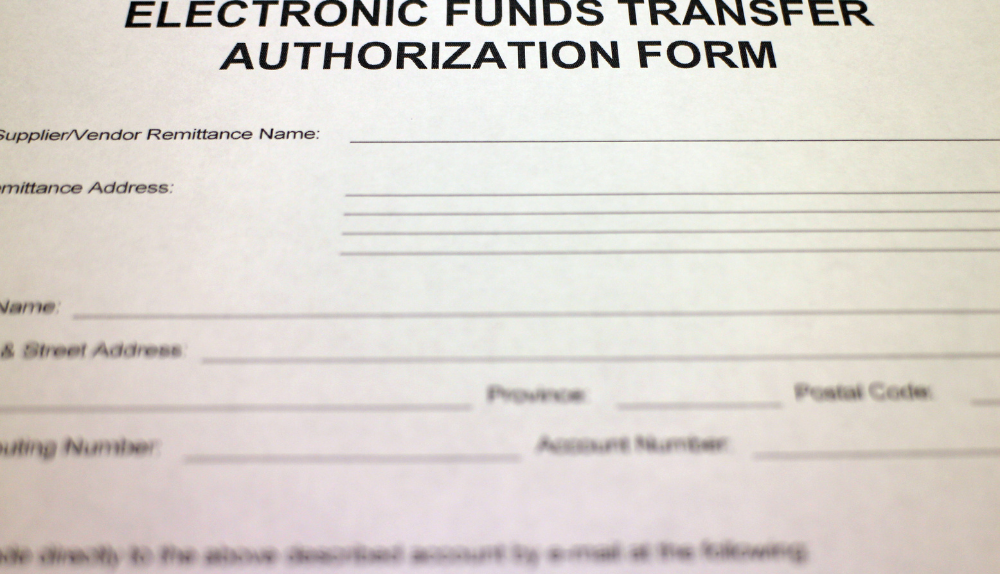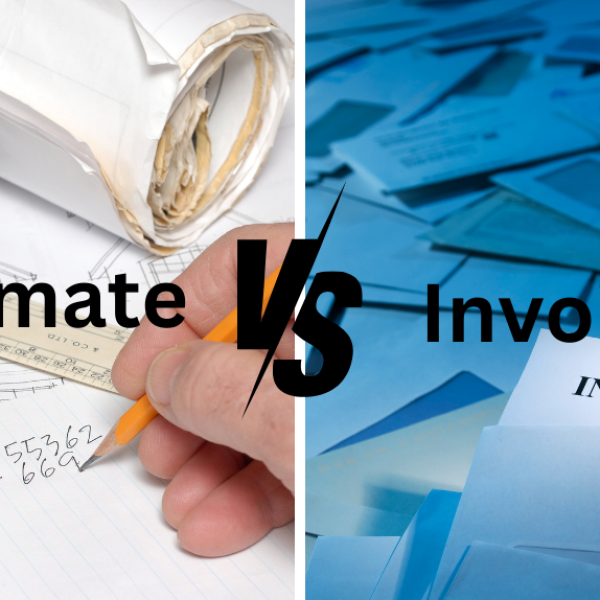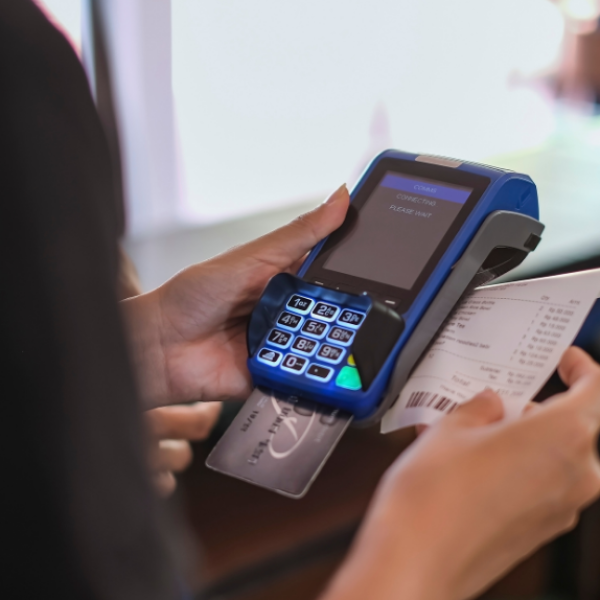Electronic Funds Transfer (EFT) payments provide a fast and secure payment solution that enables businesses to conduct transactions efficiently.
Managing payments is an essential daily activity for business owners of all sizes, from small startups to large enterprises. Whether it involves disbursing salaries to employees, settling invoices with vendors, or receiving customer payments, the capacity to execute quick, seamless, and secure transactions is crucial for business operations.
By streamlining the payment process, electronic payments enable organizations to manage financial transactions quickly and securely. In this guide, you will learn the fundamentals of EFT payments and how they work.
In This Article
ToggleUnderstanding EFT (Electronic Funds Transfer)

An Electronic Funds Transfer (EFT) is the digital money movement through an online payment system. It can occur within the same bank or between different banks, often utilizing systems like the Automated Clearing House (ACH) for ACH payments, SWIFT for wire transfers, Fedwire, and various credit or debit card networks.
EFTs are increasingly utilized in business-to-business (B2B) transactions as many companies move from traditional paper checks to more efficient and cost-effective electronic payment methods such as ACH. EFTs can facilitate transfers between accounts at the same bank or across multiple banking institutions. They include various transaction types such as direct deposits, ATM transactions, virtual cards, electronic checks (e-check), peer-to-peer payments, and personal computer banking.
As the financial world digitizes traditional paper-based processes—like utility bill payments, which previously relied on physical statements, invoices, checks, and receipts—EFT transactions are set to expand and evolve further, marking a significant shift in banking practices.
What Are Peer-to-Peer Electronic Payments?
Apps such as PayPal, Venmo, or Cash App make peer-to-peer (P2P) electronic payment systems possible, allowing individuals to transfer funds directly to one another through EFT technology.
To use these apps, users typically need to link a debit card, bank account, or both to their account. Some apps may also provide the option to link a credit card, but this may involve a fee per transaction. When you want to pay, you can open the app, enter the recipient’s details, confirm the transaction, and send the money.
Additionally, P2P platforms often serve as temporary storage for received funds. Instead of transferring money to a bank, many users use their funds within the app to pay vendors and other individuals directly. This essentially allows the P2P platform to function like a makeshift bank account. Apps like PayPal further enhance this functionality by offering debit cards, which make accessing funds even more convenient for users.
How Does EFT Work?
While many EFT payments utilize the ACH network, not all do. However, all ACH (Automated Clearing House) payments are considered EFTs. In the United States, the ACH network is the primary system for processing electronic fund transfers and facilitating transactions for individuals, businesses, and government entities at all levels.
To initiate an ACH payment, the sender must provide details like the recipient’s bank name, account number, routing number, and transfer amount. The specific steps for executing an EFT vary depending on the type of electronic payment method employed and may not always involve the ACH network.
Adopting EFT payments to transition your payment solutions to the digital realm ensures that your operations are both streamlined and secure. For more information on how the right electronic payment solution can enhance customer reach while providing secure transactions, consider exploring our payments section.
Different EFT Payment Methods

EFT payments offer convenience and swift transactions, making them widely adopted globally. Understanding the various ways to engage in EFT payments is essential. Below are some prevalent EFT methods:
- Direct Deposit:
Direct deposit is an EFT method in which an employer automatically transfers salaries into employees’ bank accounts. This process is usually managed by a third-party service provider that handles the transaction details based on the employer’s instructions. Direct deposit streamlines the payroll payment process.
- Electronic Checks (E-Checks):
E-checks are digital versions of traditional checks issued after the payer authorizes the payment. These are often used to pay vendors.
- ATM Transactions
ATMs provide a universal method to access cash. Users can withdraw money by inserting their debit card into an ATM, which connects to their bank to process and dispense cash instantly.
- Phone Payments
Phone payments involve transferring payment details, such as a card number, over a phone call. The recipient processes the transaction on their end following verbal approval from the payee, which is commonly used for paying bills.
- Internet Transactions
Internet transactions mimic physical card transactions but are conducted online. Users enter their card information into a digital payment field and confirm the transaction, which processes the payment and transfers funds within a few days.
- Credit and Debit Cards:
Regular use of credit or debit cards for purchasing goods or paying bills is a common form of EFT. These transactions efficiently move money between bank accounts and facilitate consumer spending.
- Wire Transfers:
Wire transfers are a preferred EFT method for significant financial transactions, such as a down payment on a house. Individuals and businesses commonly use wire transfers to transfer large sums that exceed typical consumer transactions.
Are EFT Payments Safe?
Although providing your bank account information to initiate an electronic fund transfer (EFT) may seem risky, EFT payments are usually secure because of the safeguards provided by the Electronic Fund Transfer Act (EFTA). If problems emerge, this legislation offers customers some legal protections.
Here are some key protections offered by the EFTA for EFT users:
- Withdrawal Limits: Banks are required to set withdrawal limits on your debit card to prevent unauthorized withdrawals of large sums.
- Unauthorized Transactions: You have the right to report any unauthorized transactions from your account within 60 days to initiate an investigation by your financial institution. Failing to report within this window could result in a lack of support from your bank in resolving the issue.
- Lost or Stolen Debit Cards: If your debit card is lost or stolen, reporting it within two days can significantly limit your liability. If reported within this period, your responsibility for unauthorized transactions could be limited to $50 or the total amount of unauthorized transfers, whichever is less.
- Recourse Against Financial Institutions: Should your financial institution fail to adhere to EFTA regulations, you are entitled to seek compensation for any violations through legal channels.
A crucial aspect of EFT safety is timely reporting of any issues. By promptly addressing concerns within specified timeframes, you can minimize your liability for unauthorized transactions. Regularly reviewing your bank statements and setting up bank alerts for unusual activities are effective ways to monitor and protect your account from fraudulent transactions.
How is EFT Different from ACH?
Although EFT and ACH (Automated Clearing House) are often used synonymously, they refer to different aspects of electronic banking. ACH is a specific type of EFT that involves transactions processed through the Automated Clearing House Network.
ACH payments are typically processed in batches daily, and depending on various factors, they can take one to four days to complete.
Conversely, some EFTs, such as debit card transactions, can occur in real-time and do not necessarily require processing through the ACH network. This distinction highlights the broader applicability and immediacy of some EFTs compared to the more regimented processing of ACH transactions.
How EFT is Different from Wire Transfers?
The distinction between EFTs and wire transfers mirrors that between EFTs and ACH transfers. While ACH transactions utilize the Automated Clearing House Network, managed by the National Automated Clearing House Association (Nacha), wire transfers are conducted through the Federal Reserve Wire Network, commonly called Fedwire.
The Federal Reserve oversees this network and enables the rapid transmission of funds between financial institutions.
How Long Do EFT Payments Take?
The duration of EFT payments can vary significantly depending on the type used. For instance, contactless digital wallet payments leveraging near-field communication (NFC) technology typically complete in just a few seconds. In contrast, ACH transfers may take several days. Here’s a brief overview of the timeframes associated with different EFT methods:
- ACH Transfers: Operated by the National Automated Clearing House Association (Nacha), these usually take 1–4 days.
- Wire Transfers: Conducted via the Federal Reserve Wire Network, or Fedwire, these can range from a few hours to 2 days.
- Digital Wallets: Transactions using credit card networks like AMEX, Mastercard, Discover, and Visa generally occur within seconds. However, card authorizations can last up to 30 days, with the settlement period flexible within that time frame.
What are the Costs Associated with EFT?
Costs Associated with EFTs:
- ACH Transfers: Typically free or carry a minimal fee.
- Wire Transfers: Fees can be up to $35 for domestic transfers and between $35 to $50 for international transfers.
- Digital Wallets: While transactions are swift, they may involve varying interest rates, other consumer fees, and business processing fees.
Conclusion
Electronic Funds Transfer (EFT) payments are a cornerstone of modern business transactions, offering a swift, secure, and efficient means of transferring funds. From direct deposits to wire transfers, EFT methods provide versatile solutions for businesses of all sizes, revolutionizing payment processes and enhancing operational efficiency.
As the digitization of financial practices continues to advance, adopting EFT payments is poised for further growth, promising unparalleled convenience and reliability. Understanding the intricacies of EFTs, including their safety measures, processing times, and associated costs, empowers businesses to harness the full potential of electronic payment solutions. Embracing EFT technologies ensures businesses remain agile, competitive, and well-equipped to navigate the evolving landscape of modern commerce.
Frequently Asked Questions
How Does EFT Work?
EFT electronically moves money between accounts by authorizing financial institutions to transfer funds. This can be done online, over the phone, or in person, with the recipient’s bank depositing the funds into their account within a few days.
Different Types of EFT Payments
EFT includes direct deposits for payroll, wire transfers for large transfers, ATM transactions, e-check, and debit card transactions for everyday purchases.
How Long Do EFT Payments Take?
The duration varies; some transfers, like wire transfers, can take a day, while international transfers may take longer. Advanced networks can facilitate near-instant transactions.
Are EFT Payments Safe?
EFT payments are more secure than traditional methods like checks because they have built-in traceability and encryption. Security is improved via two-factor authentication and end-to-end encryption.











